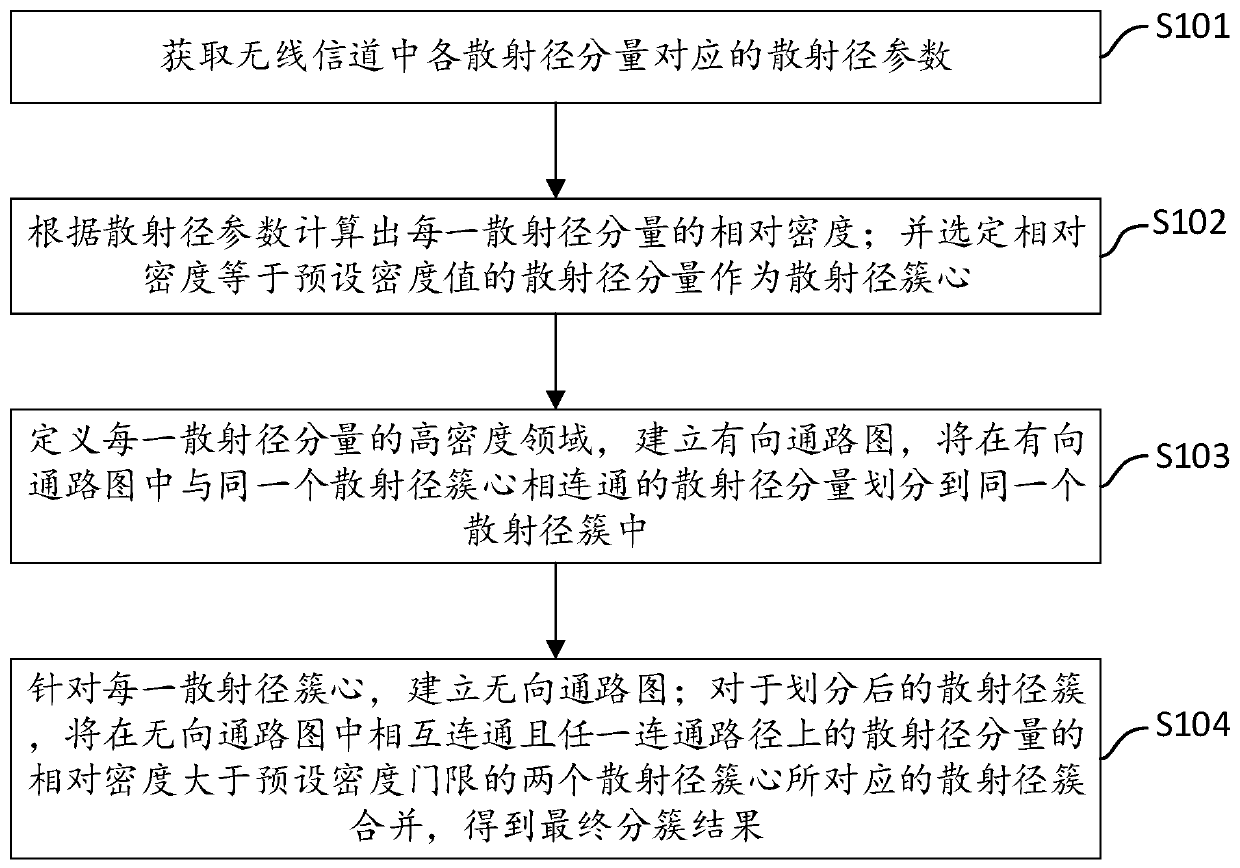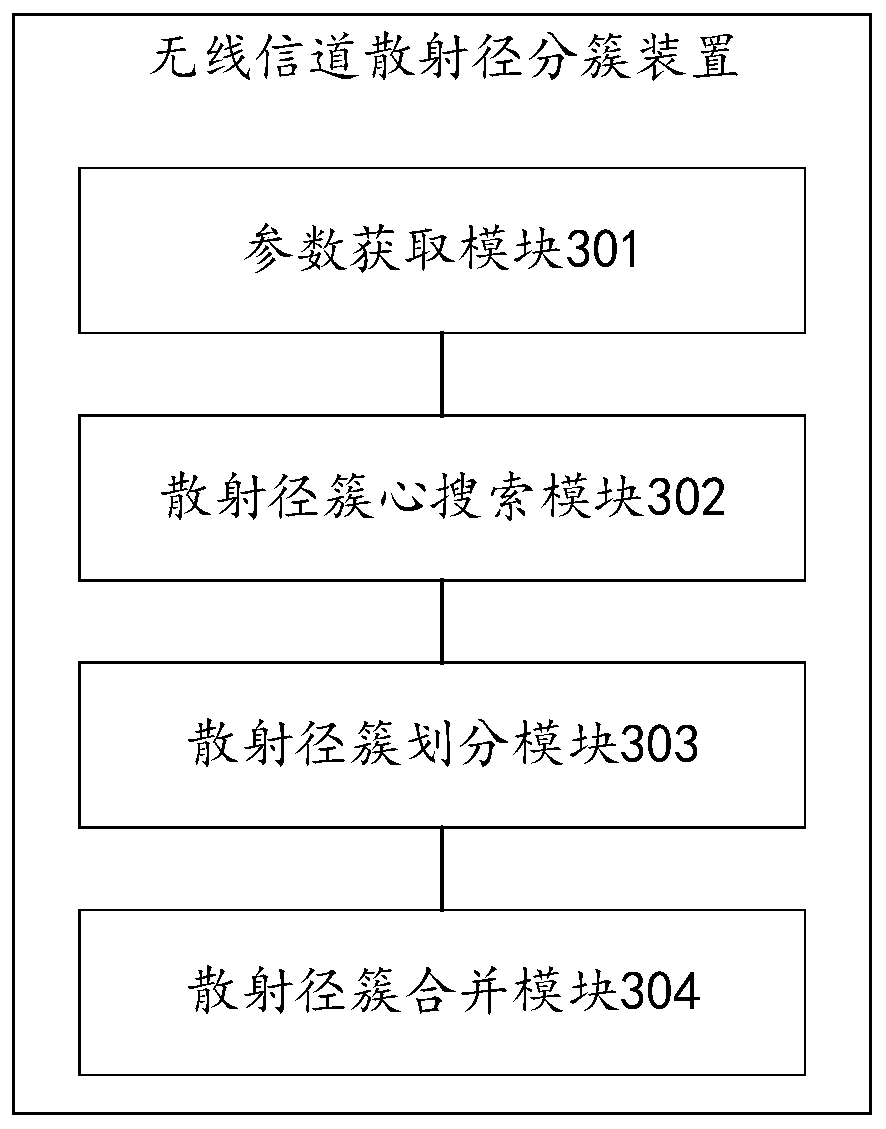Wireless channel scattering path clustering method and device
A wireless channel and clustering technology, applied in radio transmission systems, transmission monitoring, electrical components, etc., can solve problems such as high difficulty, inability to always correctly predict the number of scattering path clusters, and reduce the efficiency of automatic clustering algorithms. The effect of low computational complexity and meeting the needs of channel modeling
- Summary
- Abstract
- Description
- Claims
- Application Information
AI Technical Summary
Problems solved by technology
Method used
Image
Examples
no. 1 example
[0055] see figure 1 , this embodiment provides a wireless channel scattering path clustering method, including:
[0056] S101. Obtain scattering path parameters corresponding to each scattering path component in the wireless channel;
[0057] It should be noted that, in this embodiment, the scattering path parameters are estimated and obtained from the measured data of the wireless channel using a high-resolution algorithm; the scattering path parameters include power, delay, angle of departure, and angle of arrival; the high-resolution algorithm is MUSIC Algorithm, CLEAN algorithm, SAGE algorithm or any one of RiMAX algorithm.
[0058] S102, calculate the relative density of each scattering path component according to the scattering path parameter; and select the scattering path component whose relative density is equal to the preset density value as the scattering path cluster center;
[0059] It should be noted that the above steps are specifically as follows: according t...
no. 2 example
[0082] see image 3 , this embodiment provides a wireless channel scattering path clustering device, the device includes:
[0083] A parameter acquisition module 301, configured to acquire scattering path parameters of each scattering path component in the wireless channel;
[0084] The scattering path cluster center search module 302 is used to calculate the relative density of each scattering path component according to the scattering path parameters; and select the scattering path component whose relative density is equal to the preset density value as the scattering path cluster center;
[0085] The scatter path cluster division module 303 is used to define the high-density domain of each scatter path component, establish a directed path graph, and divide the scatter path components connected with the same scatter path cluster center in the directed path graph into the same In the scattering path cluster;
[0086]The scatter path cluster merging module 304 is used to est...
PUM
 Login to View More
Login to View More Abstract
Description
Claims
Application Information
 Login to View More
Login to View More - R&D
- Intellectual Property
- Life Sciences
- Materials
- Tech Scout
- Unparalleled Data Quality
- Higher Quality Content
- 60% Fewer Hallucinations
Browse by: Latest US Patents, China's latest patents, Technical Efficacy Thesaurus, Application Domain, Technology Topic, Popular Technical Reports.
© 2025 PatSnap. All rights reserved.Legal|Privacy policy|Modern Slavery Act Transparency Statement|Sitemap|About US| Contact US: help@patsnap.com



